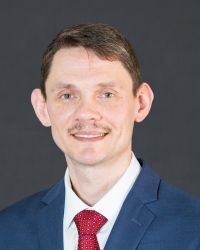Lessons Learned from Industrial Imaging and Monitoring in a Desert Environment
Presenter
Andrey Bakulin, Ph.D.
Senior Geophysical Consultant
Saudi Aramco, EXPEC Advanced Research Center
Dhahran, Saudi Arabia
Description
Land seismic is inherently more complex than marine, even more so in arid desert environments. Geophysical techniques proven in a desert environment would ace everywhere else. I will walk you through imaging and monitoring challenges and trace them down to mesoscale heterogeneity of geological media: too small to be imaged as distinct objects and too large to be treated as an effective medium. I start with a detective story explaining why recently introduced land single-sensor seismic turned out much more challenging than expected in a desert environment. We reveal speckle noise caused by mesoscale scattering as a major mechanism for signal distortions and relate them to optics and acoustics. Finally, I show an example of meter-scale depositional lithofacies heterogeneity of the Middle Eastern Carbonate Strata as a specific example of reproducing speckle distortions.
Monitoring in a desert environment is even more challenging due to shifting sand dunes and seasonal changes. First, I will walk you through actual field feasibility results with various source-receiver configurations. Then, picking the winner of hybrid acquisition with buried receivers and surface source, we dive into a 3D case study of monitoring CO2 injection in a carbonate land reservoir. I show how fantastic marine-like repeatability of 4% NRMS (Normalized Root-Mean Square error) can be achieved in complex desert environments when surveys are done in the same season. Scaling up such monitoring to more extensive areas demands Distributed Acoustic Sensing (DAS) to optimize instrumentation costs. I show a deep seismic imaging field demonstration using shallow DAS vertical arrays and compare it to conventional 2D surface seismic. I conclude by explaining how DAS antennas can decrease the density of the monitoring array, thus providing a robust system for monitoring mass-scale CO2 sequestration.
